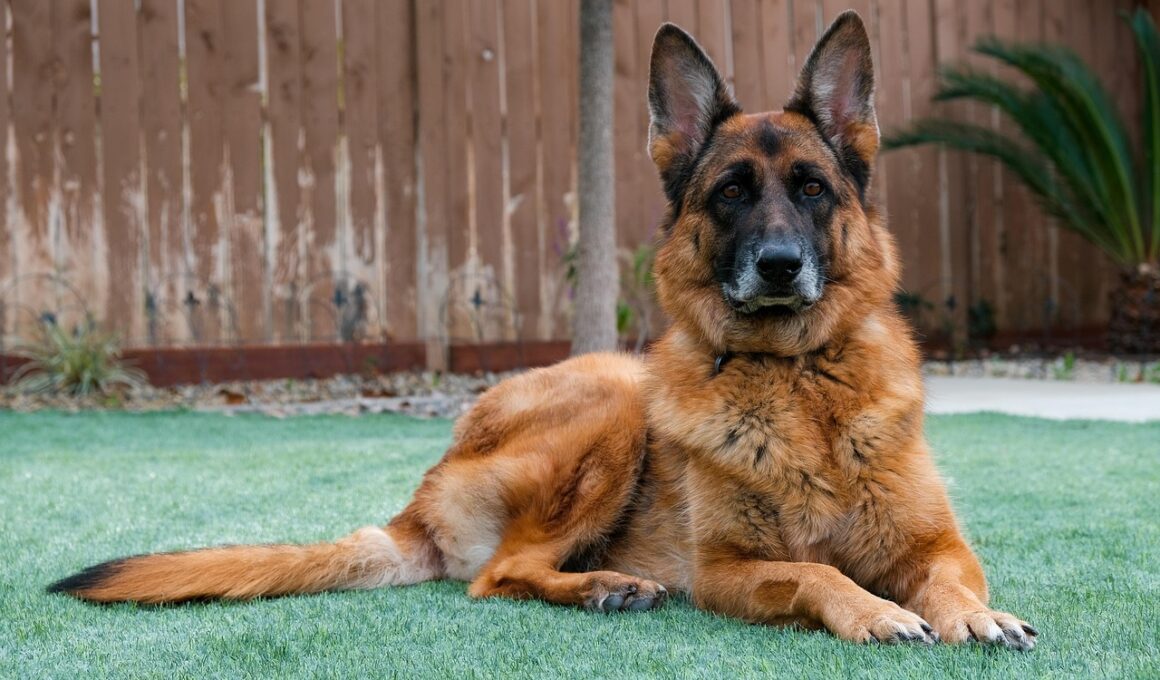Resource Guarding Defined
Resource guarding is a behavior observed in dogs where they exhibit protective actions towards specific items or places. This behavior can manifest through growling, barking, or even biting, aimed at keeping others away from their valuable resources. Items can include food, toys, and personal spaces. It is crucial to understand that this instinctual behavior may arise from survival instincts in dogs. As descendants of wild animals, dogs have inherited behaviors that help them thrive in competitive environments. When guarding resources, dogs send clear signals that they desire to maintain possession. Recognizing these signs is the first step in addressing the issue. Factors such as history of neglect, trauma, or competition can intensify resource guarding behaviors. Every dog may exhibit varying levels of resource guarding, with some being more extreme than others. Identification of these behaviors allows pet owners to establish appropriate training strategies. Basic commands and positive reinforcement can help manage these instinctual behaviors. The goal is to create an environment where dogs feel secure and less threatened by perceived challenges. Understanding resource guarding is essential in mitigating any dangerous situations arising from this behavior.
Possessiveness in dogs often gets confused with resource guarding. However, there are key differences between these two behaviors. Possessiveness can manifest when dogs exhibit an overwhelming desire to own or control various objects, people, or even space. This often doesn’t involve aggressive behavior and can present differently compared to resource guarding. For example, a possessive dog may follow individuals closely when they have food items, but they may not growl or bite if someone approaches. Instead, such a dog displays anxiety or excitement over a perceived loss of control. Recognizing these differences helps pet owners tailor their responses during training. Positive reinforcement plays a pivotal role in addressing possessiveness as well. Training methods focus on rewarding calm behavior and eliminating the anxious responses surrounding specific items. Owners may find that gradually desensitizing their dogs to situations involving competition can foster a more relaxed demeanor. Organizing play dates with other dogs can also show possessive dogs how to share effectively. Understanding the individual needs and triggers of your dog can pave the way for improvement in these behaviors.
Identifying Signs of Resource Guarding
Understanding the nuances of resource guarding involves recognizing specific behaviors that signal a dog’s distress. Some common signs include growling, stiffening of the body, and positioning themselves between their possessions and perceived threats. Dogs might also engage in overt behaviors such as snapping or lunging when approached. Such signs may not always indicate aggression toward humans but underscore a protective instinct surrounding valued items. It’s essential for owners to respect these signals, as they reflect the dog’s emotional state. When approaching a dog exhibiting resource guarding behaviors, do so with caution. Direct confrontation may escalate the situation, thus reinforcing their fear or anxiety. Instead, it is recommended to monitor such occurrences from a distance and allow the dog to feel safe. Capturing moments when dogs display calm behavior near their resources can be an opportunity for positive reinforcement. Establishing control in these situations builds trust and creates a more stable environment. Consistency in training can reshape their responses to perceived threats. Overall, comprehensively analyzing resource guarding behaviors will foster a better understanding and promote well-being for both dogs and their owners.
Training techniques can significantly reduce instances of resource guarding. One effective approach is gradual desensitization, wherein dogs are introduced to potential triggers slowly and safely. This can mean allowing them to become accustomed to having their cherished items approached while remaining calm. Over time, dogs can learn that their possessions aren’t under threat, which alleviates their anxiety. Positive reinforcement plays a crucial role in this process. Whenever a dog displays calm behavior during exposure to their resource, offers such as praise or treats should be provided. Reinforcing positive behavior builds a more confident dog that doesn’t feel the need to guard aggressively. Training sessions should be conducted in short bursts to keep dogs engaged while limiting stressors. Providing regular opportunities to practice sharing with toys or food also deepens their understanding that sharing can yield positive experiences. In classes specialized in resource guarding issues, owners can gain extra strategies from professionals. Additionally, having book resources and online articles can further empower owners to handle situations. Comprehensive training methods often result in a cooperative and sociable dog, which is beneficial for family dynamics.
Managing Possessiveness Effectively
Managing a dog’s possessiveness requires understanding their emotional triggers and motivations. For dogs displaying heightened possessiveness over toys or space, it is important to redirect their focus positively. Training techniques such as the “leave it” command can help shift their attention away from items they cling to. This encourages dogs to engage with their surroundings without claiming ownership. Creating structured environments during playtime can also minimize possessive behavior. Providing individual play sessions reduces the urge to compete for objects and promotes sharing. Owners can introduce games that require turn-taking, aiding dogs in learning cooperation. Socialization with other friendly dogs can create positive associations, teaching possessive dogs how to share space and toys. Connecting with other dog owners can bolster progress as well. Employing distraction, in the form of toys or treats, during times of heightened possessiveness can significantly aid in reducing anxiety. Over time, dogs can learn to associate people approaching them with positive interactions rather than threats. With patience and consistent training, managing possessiveness can foster a harmonious relationship between dogs and their environment.
When comparing resource guarding and possessiveness, the outcomes of each behavior can vary dramatically. Resource guarding often leads to conflict or aggressive behaviors as dogs feel threatened. Possessiveness, on the other hand, may lead to anxiety but typically doesn’t escalate to the same aggressive levels. Both behaviors stem from innate instincts, but they can be molded through effective training and understanding. Knowledge about these behavioral differences equips owners with tools to respond appropriately. Understanding the foundational cause of these actions is vital in reducing negative outcomes. Recognizing that both behaviors stem from insecurity or fear provides valuable perspective on managing situations effectively. Engaging in open communication with a veterinarian or a professional dog trainer can offer a wealth of information and strategies tailored to individual needs. Resources such as online forums allow owners to share experiences and receive advice from others facing similar challenges. Continuous learning enables owners to feel empowered and confident in addressing their dog’s behavior. Time and diligence invested in understanding these behaviors enhance the bond between the dog and its owner.
Creating Positive Experiences
To successfully address both resource guarding and possessiveness, creating positive experiences is fundamental. Frequent interactions involving food, toys, and people should be framed within a context that emphasizes comfort and security. During training sessions, introducing low-stress environments allows dogs to thrive while feeling supported. Regular practice in various settings contributes to ongoing learning without overwhelming them. Gradually increasing the challenge offers dogs opportunities to adapt and respond effectively to previously challenging situations. Additionally, focusing on enriching play routines such as agility training can foster confidence. Engaging in diverse activities encourages dogs to explore their surroundings, helping to decrease possessiveness towards specific items. Incorporating mental stimulation through puzzle toys encourages problem-solving skills, redirecting their attention from guarding behavior. Keep in mind that training should always prioritize the dog’s overall well-being. Making these activities enjoyable not only strengthens skills but also nurtures the bond between dog and owner. Owners should be patient and aware that gradual changes often lead to lasting results. With time, dedication, and positive reinforcement, desired behavioral outcomes can be achieved.
Concluding this examination of resource guarding and possessiveness reveals the importance of distinguishing between these behaviors. Understanding the underlying reasons helps owners manage their dog’s instinctual responses effectively. The nuance of these two behaviors lies in their manifestations and potential consequences. Developments in dog training and behavior management provide adequate solutions to navigate these challenges successfully. Owners should feel encouraged to seek guidance from qualified trainers, fostering further understanding of their dog’s actions. The commitment to addressing resource guarding can enrich the overall quality of life for both dogs and owners. Establishing a deeper connection through training opens opportunities for shared experiences and social interactions. Building a supportive environment nurtures emotional stability for the dog. As a result, successful strategies can lead to safer, happier dogs capable of interacting positively with others. By recognizing and understanding their dog’s behaviors, owners can transform the dynamic of their relationship. Engaging with resources and professional advice ensures continued progress. Effective training will contribute positively to family harmony, resulting in better socialization and companionship for all involved. Ultimately, appreciating the differences aids in preventing potential behavioral issues from manifesting.





